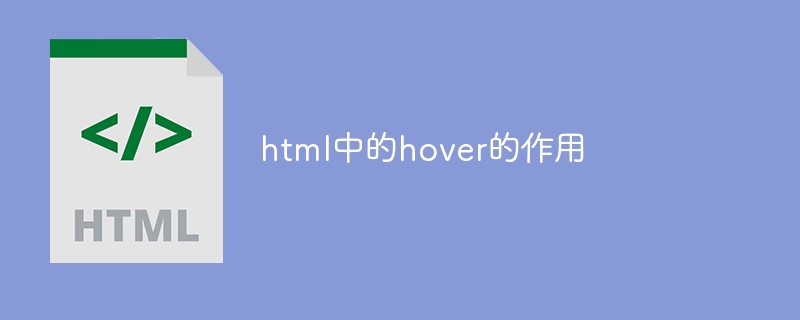

The role of hover in HTML and specific code examples
In web development, hover refers to when the user hovers the cursor over an element When, trigger some actions or effects. It is implemented through the CSS :hover pseudo-class. In this article, we will introduce the role of hover and specific code examples.
First, hover allows an element to change its style when the user hovers it. For example, when hovering the mouse over a button, the button's background color or text color can be changed to remind the user of the currently selected button. The following is a simple code example:
<!DOCTYPE html>
<html>
<head>
<style>
.btn {
background-color: blue;
color: white;
padding: 10px;
border: none;
cursor: pointer;
}
.btn:hover {
background-color: red;
}
</style>
</head>
<body>
<button class="btn">按钮</button>
</body>
</html>In the above code, the initial background color of the button is blue. When the mouse hovers over the button, the background color of the button changes to red.
Secondly, hover can also be used to create interactive effects. For example, when the mouse is hovering over an image, a magnification effect can be displayed, or on a navigation menu, when the mouse is hovering over an option, a secondary menu can be displayed. The following is a code example that uses hover to create a picture magnification effect:
<!DOCTYPE html>
<html>
<head>
<style>
.image {
width: 200px;
height: 200px;
overflow: hidden;
}
.image img {
width: 100%;
height: 100%;
transition: transform 0.3s ease-in-out;
}
.image:hover img {
transform: scale(1.2);
}
</style>
</head>
<body>
<div class="image">
<img src="image.jpg" alt="图片">
</div>
</body>
</html>In the above code, when the mouse hovers over the picture, the scale property of the picture is set to 1.2, that is, the picture is magnified 1.2 times, thus achieving The effect of enlarging the picture.
Finally, hover can also be used to control the display and hiding of elements. For example, in a list, when the mouse hovers over a list item, the detailed content of the list item is displayed. The following is a code example that uses hover to control the display and hiding of elements:
<!DOCTYPE html>
<html>
<head>
<style>
.list-item {
display: none;
}
.list:hover .list-item {
display: block;
}
</style>
</head>
<body>
<ul class="list">
<li>列表项1</li>
<li>列表项2</li>
<li>列表项3</li>
<li class="list-item">列表项1的详细内容</li>
<li class="list-item">列表项2的详细内容</li>
<li class="list-item">列表项3的详细内容</li>
</ul>
</body>
</html>In the above code, when the mouse hovers over the list item, the detailed content of the list item is displayed through the :hover pseudo-class selector. display.
To sum up, hover plays an important role in web development. It can change the style of elements, create interactive effects, and control the display and hiding of elements. By properly using hover, you can add more interactivity and appeal to your web pages.
The above is the detailed content of The role of hover in html. For more information, please follow other related articles on the PHP Chinese website!